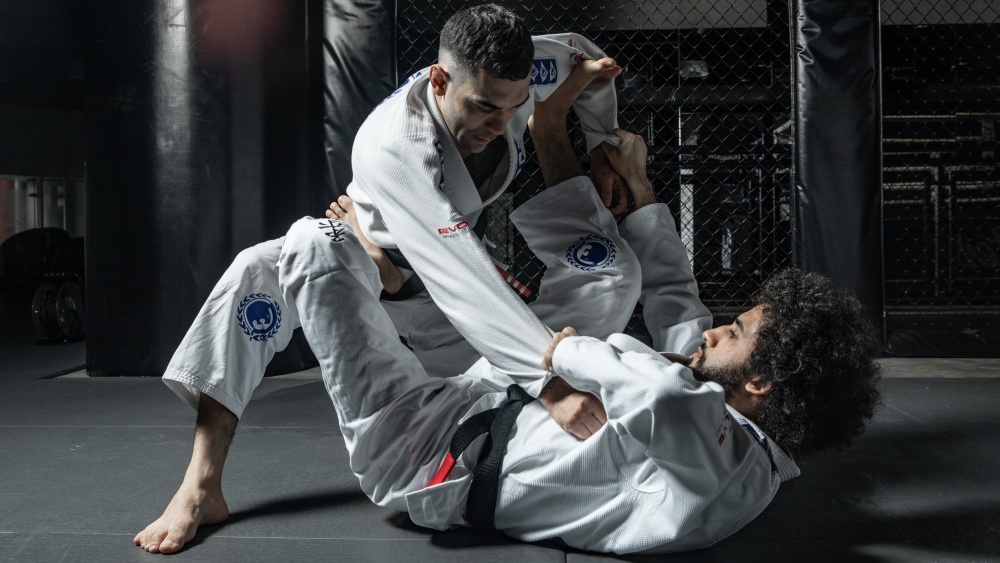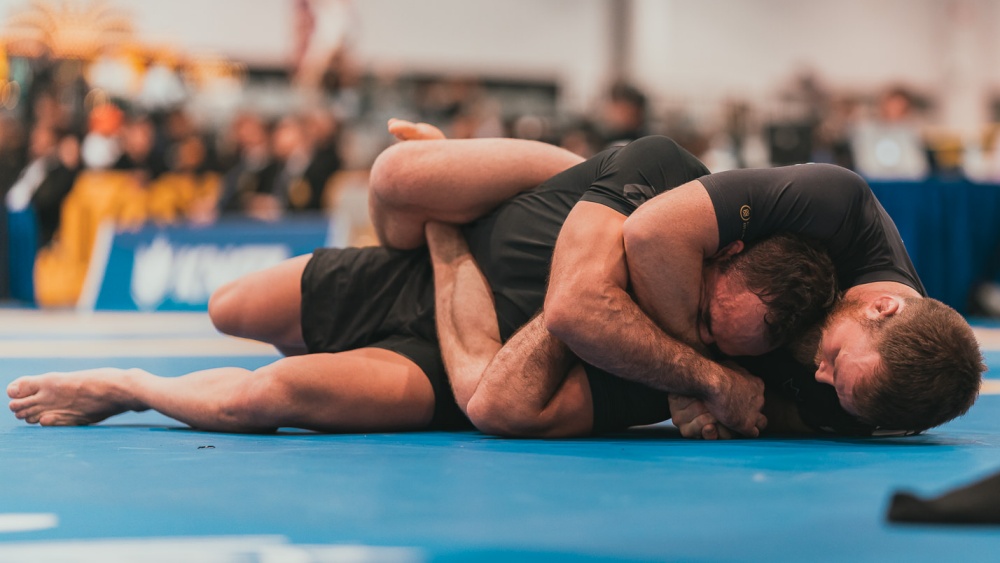A significant part of your time training Brazilian Jiu-Jitsu will focus off your back. The bottom game is a big part of the sport and involves using techniques to attack the opponent, as well as defending their attacks. Today we’ll go over a defensive aspect of the bottom game known as guard retention and recovery.
The Benefit Of Recovering To Guard
If you’ve been training in BJJ for a while, you should know that sooner or later your guard will get passed. This means that you should study guard recovery techniques so that you can stay safe against your toughest training partners and opponents.
Guard recovery is a defensive approach where your goal is to retain and eventually recover your guard. Take note that guard recovery is different from pin escapes. Recovering your guard is a precursor to pin escapes, meaning that your guard is still not passed, as compared to pin escapes where you are now passed and working on ways to escape pins like mount, side control or north-south. Both are equally important and must be studied carefully.
Guard Recovery Drills
In this video, BJJ black belt Almiro Barros demonstrates 7 drills to develop your guard recovery. These drills are based on actual sequences you can do to keep your guard. The 7 drills we’ll go over today can serve as your basic building blocks for improved retention and recovery.
1) Shrimp And Pummel
The first drill starts from the guard. Your objective here is to do a basic shrimp to create space and then do a high-leg pummel so you can build frames against your opponent’s torso. This is a simple 2 move combo that’s useful against opponents who love to pass while on their knees.
2) Frame, Shrimp And Reguard
The second drill is a nice follow-up to the first one and also aims to stop kneeling pressure passers. This time you frame against their elbow as they go for a stack pass. Next is to shrimp out and go back to guard. An easy yet valuable movement to add to your toolbox.
3) Granby Recovery
The third drill is the half-granby recovery. This drill is a counter to the toreando guard pass from the upright position. Once your opponent shifts your body to the side, use the momentum to rock to the opposite side as you extend your legs to get back to guard. This may look a little fancy but is pretty easy to do.
4) High Leg
The fourth drill works great against opponents who want to pass by moving from side to side. Raise your legs as your opponent passes under your legs. Don’t forget to frame with your arms and go to your side as you do this so that you can prevent their forward movement.
5) Leg Frame Against The Hip
The fifth drill is similar to the fourth one as you also use your leg to block the opponent’s movement. From the open guard, shift your body and use your leg to track the opponent’s hips. Like the previous drills, use your arms to frame and go back to guard.
6) Arm Frame To Recovery
The sixth drill involves using your arms to block the opponent’s low-pressure pass. Frame against their arm and shoulder, as you shrimp to create space and recover guard. A very simple defensive movement but works surprisingly well.
7) Go Belly Down
The last drill in the series involves going to your belly, and then moving at an angle to access their legs. The end position puts you in a prime spot to attack with low single-leg takedowns. This is a great sequence and will surely catch your opponents off guard.
Drills Are Meant To Be Drilled

The open guard is one of the most fundamental positions in BJJ, facilitating transitions to various joint locks and submissions.
The main value of these drills is that they are easy enough to do in short sessions. For you to master these movements, we recommend that you practice these 7 drills consistently for at least a couple of months. You can integrate these drills before or after your technical training so that they become a part of your daily routine. Guard recovery is a pursuit that will take years of consistent development.
Start by drilling with no resistance, focusing on following all the steps in the video. Make it a point to stay technical and never rush the drill, this stage is critical for muscle memory. Next, include common reactions and defenses with little resistance. You can also do situational sparring within these positions to troubleshoot any difficulty you may encounter. The last stage is to use them in your live rolls as much as you can. Stay fluid and try your best to remember the mechanics of the sequences. You’ll notice that doing these movements in actual sparring may not feel intuitive in the beginning. This is absolutely okay. Just stay consistent and be open to adjustments.
Self Learning And Adjustment
Incorporating these micro drills will make your BJJ that much better. While we encourage you to practice these 7 drills as demonstrated, you can also use this learning approach to tweak other parts of your game. Pick a position and target a small segment of the exchange. Break down the movements within the position and create a drill from it. These will help you level up in no time.
We as grapplers all have blind spots in our Jiu-Jitsu. It is a good idea to ask your instructor or training partners to pinpoint these spots, and from there create drills to supplement your learning. It is not enough to be skilled in just a couple of positions. We must all strive to become the best that we can possibly be.
Conclusion
Guard recovery plays a major role in one’s BJJ. Moving from a defensive to an offensive cycle means that you should be able to freely switch from defense (which includes guard recovery) to offense instantly. Try these drills today and let us know if they work for you.
You may also like:
















